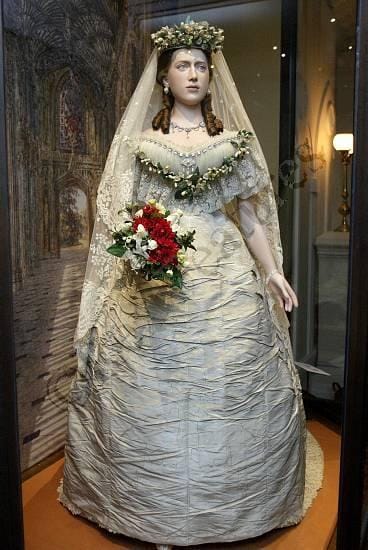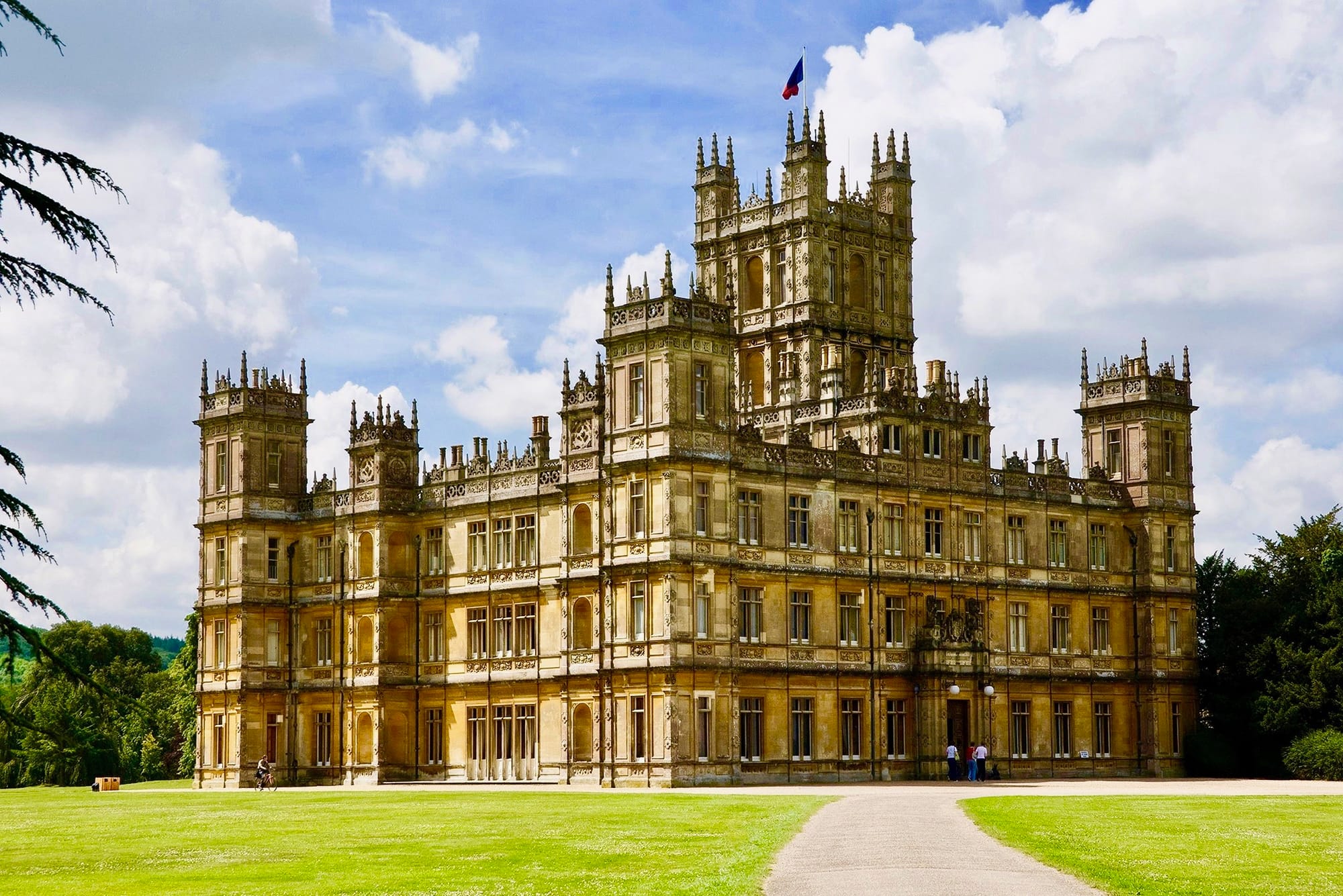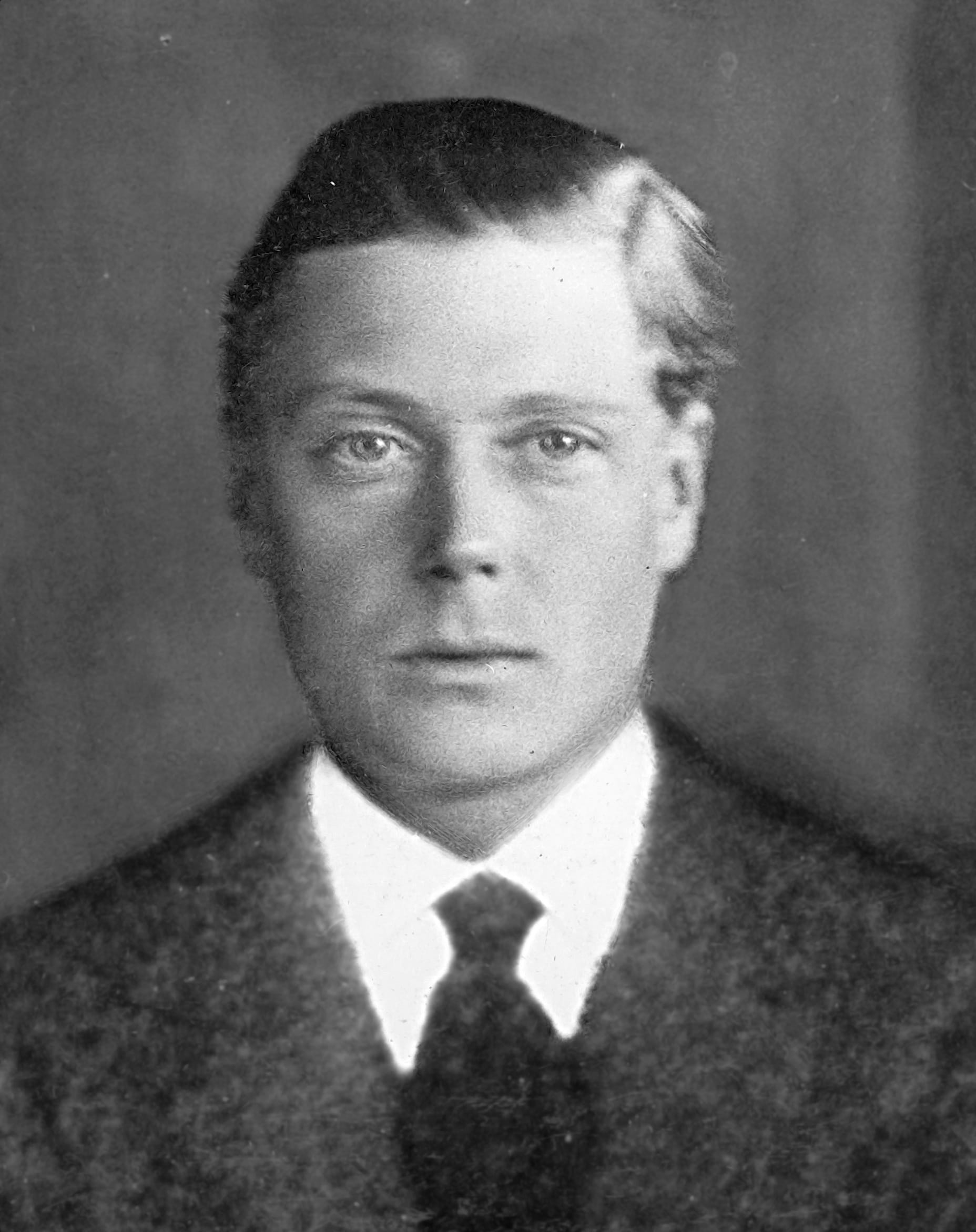Queen Victoria's Secret Wedding Dress
Welcome to Historical Heritage (previously the Highclere Castle trip giveaway), where we highlight elegance, history and regal stories every week. We also include news and interviews when applicable. Take a small break from our loud existence and enter a world of quiet elegance.
Fascinating History: Queen Victoria's "Secret" Wedding Dress

Queen Victoria's choice of a white wedding dress was groundbreaking for its time. Before her marriage to Prince Albert, brides commonly wore their best dresses, which were often in colors like blue, green, or even black, depending on the family’s wealth and the fashion of the period. White was considered a color worn only by the wealthy, but it was not traditionally associated with weddings.
Victoria's gown, designed by her dressmaker, William Dyce, was made of white silk satin and adorned with Honiton lace. She paired it with a matching white bonnet and a bouquet of myrtle, which has since become a traditional element in British weddings. The choice was initially met with surprise and some criticism from the public and press, who were accustomed to the more extravagant, colorful bridal attire.
A New Precedent
Despite the initial skepticism, Queen Victoria's wedding set a new precedent. Her decision to wear white became symbolic of a new era in wedding fashion, one that emphasized purity and simplicity. The trend spread rapidly, and white became the standard choice for brides, a tradition that continues to this day.
Additionally, Victoria's gown was not only a fashion statement but also a reflection of her personal values and her desire for a more modest, intimate ceremony. The dress and the subsequent popularity of white wedding gowns illustrate how Victoria's personal choices had a profound impact on cultural practices, extending far beyond the realm of royal traditions.
Highclere Castle Grounds in August: A Beautiful Summer

In August, Highclere Castle becomes a hub of activity as it hosts a series of special events and tours. The summer months bring an influx of visitors eager to explore the grand interiors and lush grounds of the estate. Guided tours provide insights into the castle’s rich history, its role as the setting for "Downton Abbey," and the fascinating lives of its former residents. The castle often holds themed events, such as garden tours, historical reenactments, and outdoor theater performances, which draw both locals and tourists alike. The estate's café and gift shop offer a range of locally sourced products and Downton Abbey memorabilia, enhancing the visitor experience.
Additionally, August is a prime time for the estate's agricultural activities. The farm's fields are abuzz with the harvest of crops like wheat, barley, and various vegetables. The estate’s team manages the land carefully to maintain its historical and ecological significance. Events such as harvest festivals or farmer's markets might take place, showcasing the produce and celebrating the agricultural traditions that have been part of Highclere's heritage for centuries. The combination of historical charm and seasonal vibrancy makes August an especially lively and engaging time at Highclere Castle.
Downton Abbey Movie + Lady Violet Spin-Off

The highly anticipated "Downton Abbey" movie is currently filming and is set to release on September 12, 2025. The film promises to captivate fans with its continued exploration of the beloved Crawley family and their estate. Picking up from where the previous film left off, the new movie is expected to delve deeper into the evolving social and political landscape of the early 20th century, offering fresh storylines and character developments. With the return of the original cast and the introduction of new faces, the film aims to deliver the same charm, drama, and elegance that made the series a global phenomenon.
Spin-off Announcement
While filming for the third installment of the beloved "Downton Abbey" series has just begun at Highclere Castle, plans for a prequel are already underway, according to The Mail on Sunday. The prequel will focus on Maggie Smith’s character, the Dowager Countess of Grantham, in her younger years as she charms aristocrats across Europe.
Known for her scathing sarcasm and barbed wit, the Dowager Countess became a fan favorite among "Downton Abbey" enthusiasts. Throughout the television series and the two blockbuster films, viewers have been treated to tantalizing hints about the "fun" she might have had before settling down with her late earl husband.
There is no guarantee this will get made, so we highly encourage everyone to sign the petition!
This Week in History: The Abdication Crisis Involving King Edward VIII in 1936

For this week in history, we have the abdication crisis of 1936 which remains one of the most dramatic and pivotal episodes in British royal history. This event centered around King Edward VIII and his relationship with Wallis Simpson, an American divorcée, which ultimately led to his unprecedented abdication from the throne.
Background
King Edward VIII ascended to the throne on January 20, 1936, following the death of his father, King George V. Edward was a popular figure, known for his charm and modern outlook. His relationship with Wallis Simpson, an American socialite who had been twice divorced, began while her second divorce was still in progress.
The Crisis
As news of Edward's intention to marry Wallis Simpson became public, it sparked a constitutional crisis. The British government, led by Prime Minister Stanley Baldwin, strongly opposed the marriage due to Wallis's status as a divorcée with two living ex-husbands. At the time, the Church of England, of which the monarch is the Supreme Governor, did not permit the remarriage of divorced persons if their former spouses were still alive.

Opposition to the marriage was widespread among the royal family and the British establishment. While public opinion was divided, a significant portion of the population was uncomfortable with the idea of Wallis Simpson as queen consort. Despite the mounting opposition, Edward remained determined to marry Wallis. He saw no alternative but to abdicate if he could not marry the woman he loved and retain the throne.
Abdication
Faced with a choice between the throne and Wallis, Edward chose to abdicate. On December 10, 1936, he signed the Instrument of Abdication in the presence of his three brothers: the Duke of York (future George VI), the Duke of Gloucester, and the Duke of Kent. The following day, December 11, 1936, Edward addressed the nation via radio, famously stating, "I have found it impossible to carry the heavy burden of responsibility and to discharge my duties as king as I would wish to do without the help and support of the woman I love."
Aftermath
Following his abdication, Edward was given the title Duke of Windsor. He married Wallis Simpson on June 3, 1937, in a private ceremony in France. The couple spent most of their lives in exile, living in various countries, including France and the United States.
Edward's abdication led to his younger brother Albert, Duke of York, becoming King George VI. George VI's reign was marked by his leadership during World War II and his efforts to strengthen the morale of the British people during the conflict. He was also the father of the current monarch, Queen Elizabeth II.
The abdication crisis had lasting effects on the British monarchy, reinforcing the idea that the personal choices of a monarch must align with the expectations and norms of their role. It remains a significant historical event, highlighting the tensions between personal happiness and public duty.
Discover Highclere Castle Gin
Born from Highclere Castle, renowned for its parties and acclaimed for its taste. Highclere Castle Gin is the winner of over 100 international spirit awards with multiple scores of 96 points.

Highclere Castle Gin is distilled from a blend of botanicals grown on Highclere Castle’s ancient estate including vibrant oranges from the Victorian Orangery.

Love what we are doing here?
Stay subscribed for more next week as continue to improve and evolve this weekly mailing. As our audience grows, we will be able to start pulling in exclusive interviews and more in-depth story-telling.
Most importantly, we hope you enjoy this small weekly escape as much as we do!
The Eighth Inc. c/o Historical Heritage
46 Plains Road
Essex, CT 06426
©2024 Historical Heritage | hi@historical-heritage.com | Privacy Policy
